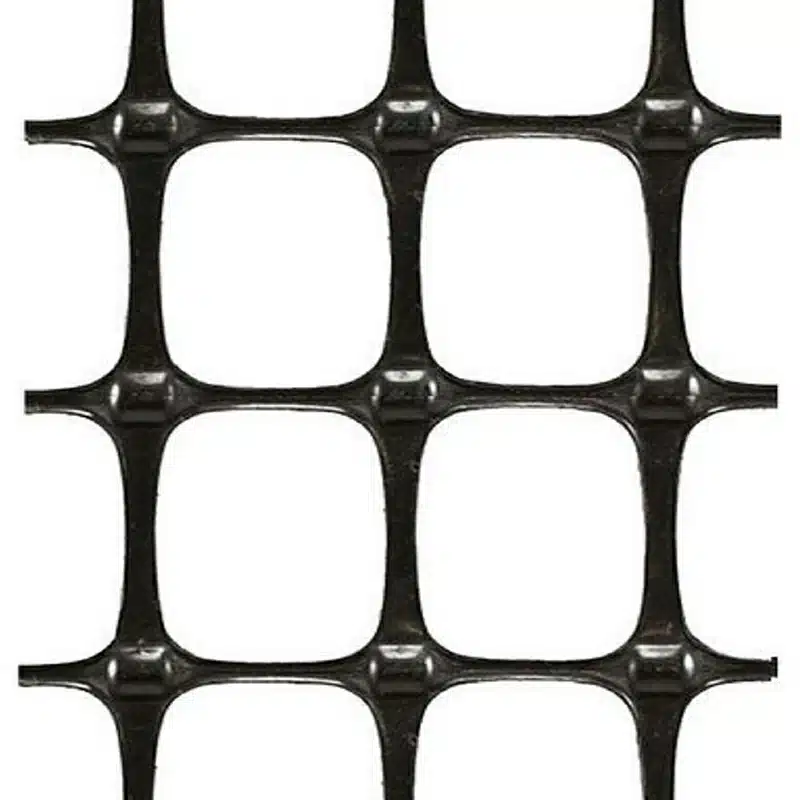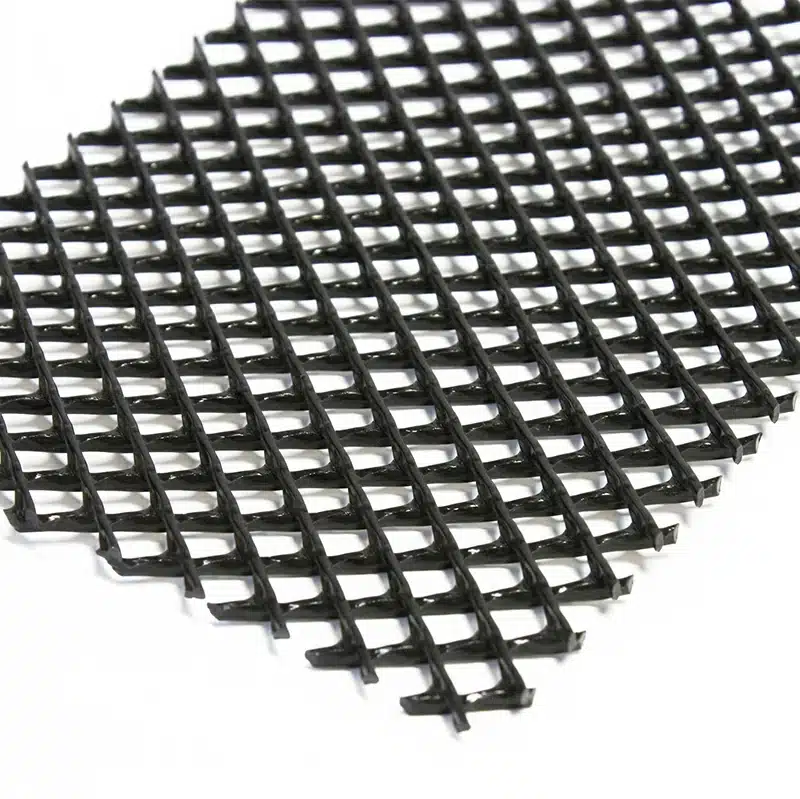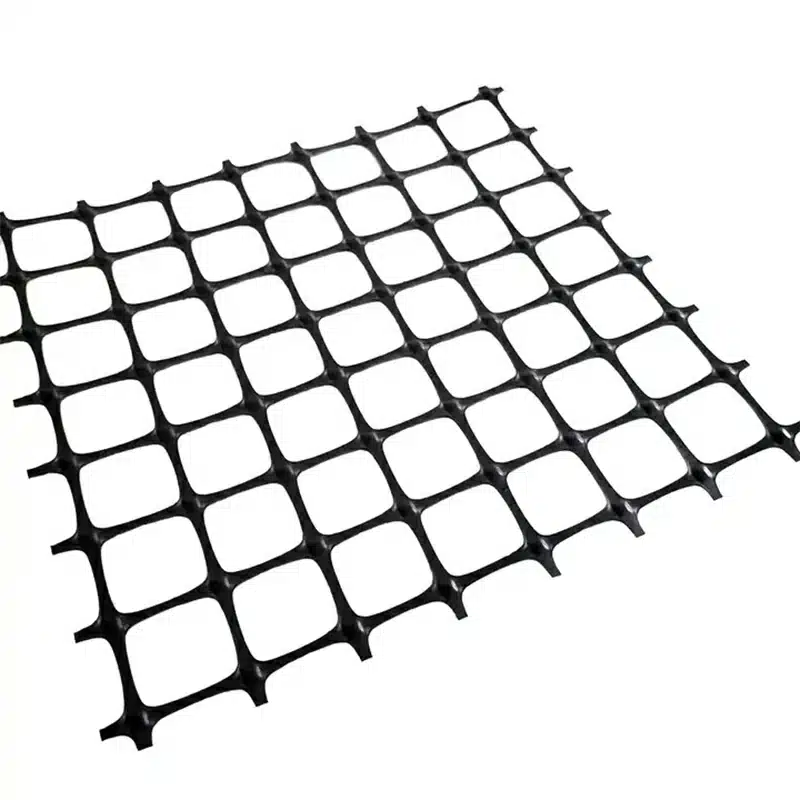+86-159 9860 6917
info@geofantex.com
geofantex@gmail.com
+86-400-8266163-44899
When it comes to geotextiles, two commonly used terms are geogrid and geonet, which are often compared due to their similar functions in civil engineering and construction projects. While both materials serve vital roles, they have distinct differences and applications. In this article, we will explore the key distinctions between geogrid vs. geonet, their respective uses, why geogrid is not considered a geotextile, and delve into the role of geonet within the realm of geotextiles.

What is the difference between geotextile and geonet?
Geotextiles and geonets are both types of geosynthetic, materials used in civil engineering and construction projects, but they serve different primary functions and have distinct physical characteristics.
Geotextiles:
| Function | Geotextiles are primarily used for filtration, separation, reinforcement, and protection. They allow water to pass through while preventing soil particles from being washed away. This makes them ideal for use in drainage, erosion control, and soil stabilization applications. |
| Material | They are typically made from woven or non-woven synthetic fibers like polypropylene or polyester. |
| Properties | Geotextiles are characterized by their ability to provide tensile strength, soil separation, and permeability to water. They can be designed to have varying degrees of water flow rates, strength, and filtration characteristics. |
| Applications | Common applications include road construction, railway work, landfills, drainage systems, erosion control, and as a protective layer in geomembrane installations. |
Geonets:
| Function | Geonets are primarily used for drainage. They are designed to create a pathway for the flow of gases or liquids within the plane of the net. This makes them particularly useful in applications where high-capacity drainage is required. |
| Material | Geonets are usually made from polyethylene or other similar polymers and consist of a series of overlaid ribs or a net-like structure. |
| Properties | The key property of a geonet is its in-plane flow capacity, allowing for efficient drainage of liquids or gases. They are less about filtration or separation and more about creating channels for fluid movement. |
| Applications | They are often used in landfill liners, roadbeds, and earth retaining systems, where they help manage water or gas accumulation. |
In summary, while both geotextiles and geonets are used in geotechnical and environmental engineering applications, geotextiles are versatile materials focusing on separation, filtration, and reinforcement, whereas geonets are specialized for high-capacity drainage applications. They are often used together in various construction projects to leverage the benefits of both materials.
What is a geonet used for?
A geonet is a type of geosynthetic material specifically designed for drainage applications. It is used in various civil engineering and environmental projects to facilitate the efficient flow and collection of liquids or gases. The primary uses of geonets include:
| Landfill Drainage | In landfill applications, geonets are used to collect and transport leachate, a liquid that percolates through waste. They are placed in landfill liners or caps to prevent the buildup of leachate, which can be harmful to the surrounding environment. |
| Road and Railway Construction | Geonets are used beneath roads and railway tracks to provide effective drainage, which helps maintain the structural integrity of these constructions. Proper drainage is crucial to prevent waterlogging, which can weaken and damage the road or railway base. |
| Earth Retaining Structures | Geonets can be used to facilitate the drainage of water away from the foundation, thereby reducing the risk of water damage and structural issues related to water infiltration. |
| Foundation Drainage | Geonets are used in the drainage layers of ponds and reservoir liners to control the water levels and manage seepage effectively. |
| Erosion Control | They can be used in erosion control systems to manage the flow of surface water and reduce the impact of water on slopes and embankments. |
| Tunnel Drainage | In tunnel construction, geonets are used to collect and channel water away from the tunnel walls, helping to manage water ingress and maintain structural integrity. |
| Roof Gardens and Landscaping | In green roofing systems and landscaped areas, geonets can assist in managing excess water, thus protecting the structure and the vegetation. |
| Pond and Reservoir Liners | Geonets are used in the drainage layers of pond and reservoir liners to control the water levels and manage seepage effectively. |
In these applications, geonets are often used in combination with other geosynthetics, such as geotextiles, which act as filters to prevent the clogging of the geonet channels by soil or other fine particles. This combination ensures efficient drainage while maintaining the integrity of the surrounding materials.

Why geogrid is not geotextile?
Geogrid and geotextile are both geosynthetic materials used in construction and civil engineering to improve ground stability, but they differ significantly in composition, function, and application:
Definitions
- Geogrid: A geosynthetic material with a grid-like structure, primarily designed for soil stabilization and reinforcement. It provides tensile strength, enhancing the load-bearing capacity of the soil.
- Geotextile: A permeable fabric, usually woven or nonwoven, designed to separate, filter, reinforce, protect, or drain. Geotextiles are often used for filtration and erosion control, allowing water to pass through while preventing soil migration.
Key Differences Between Geogrid and Geotextile
| Feature | Geogrid | Geotextile |
|---|---|---|
| Structure | Open grid pattern with large apertures | Permeable fabric without large openings |
| Primary Function | Soil reinforcement, load distribution | Filtration, separation, and erosion control |
| Material | High-tensile polymers like polypropylene | Woven or nonwoven synthetic fabrics |
| Tensile Strength | High, supports heavy loads | Lower, mainly for filtration |
| Water Permeability | Limited to none (in most cases) | High, allows water passage |
Application Examples
- Geogrid: Often used in road construction to reinforce subgrades, stabilize slopes, or support retaining walls where tensile strength and load distribution are critical.
- Geotextile: Common in drainage systems, roadbeds for separation layers, and embankments to prevent soil erosion while allowing water flow.
Geogrids are ideal for applications requiring structural reinforcement due to their grid design and strength, while geotextiles are suited for applications needing filtration and erosion control. These materials serve complementary functions in construction, with geogrids excelling in load-bearing and geotextiles in permeability.
What is Geonet in geotextile?
Geogrid and geotextile are both materials used in civil engineering and construction projects, but they serve different purposes due to their distinct properties and structures.
Geogrid:
- Composition: Geogrids are typically made of polymers such as polyester, polyethylene, or polypropylene.
- Structure: Geogrids have a grid-like structure with open spaces between the intersecting ribs.
- Properties: They are known for their high tensile strength and stiffness.
- Function: Geogrids are primarily used for soil reinforcement, providing structural support by distributing loads over a wider area.
- Applications: Common applications of geogrids include stabilizing slopes, reinforcing retaining walls, and strengthening pavement structures.
Geotextile:
- Composition: Geotextiles are made of synthetic or natural fibers, such as polyester, polypropylene, or polyethylene.
- Structure: Geotextiles have a fabric-like structure, with fibers woven or non-woven together.
- Properties: They exhibit high permeability and filtration properties while offering moderate tensile strength.
- Function: Geotextiles are primarily used for filtration, drainage, separation, and protection.
- Applications: They are used in applications such as erosion control, sediment control, soil stabilization, and drainage systems.
Differences:
- Geogrids provide structural reinforcement and load distribution, while geotextiles focus on filtration, drainage, and separation.
- Geogrids have higher tensile strength and stiffness compared to geotextiles.
- Geogrids are more suitable for applications requiring structural support and soil stabilization, while geotextiles are used in situations requiring filtration, drainage, and erosion control.
In summary, while both geogrids and geotextiles play essential roles in civil engineering projects, their unique properties and functions make them suitable for different applications and requirements.
In conclusion, understanding the difference between geogrid and geonet in geotextiles is crucial for selecting the right materials for construction and civil engineering projects. Geogrids offer reinforcement, while geonets facilitate drainage. Geonets can also be integrated into geotextiles to provide combined filtration and drainage capabilities, making them versatile solutions in various applications.



Get Free Sample
We’ll respond as soon as possible(within 12 hours)













